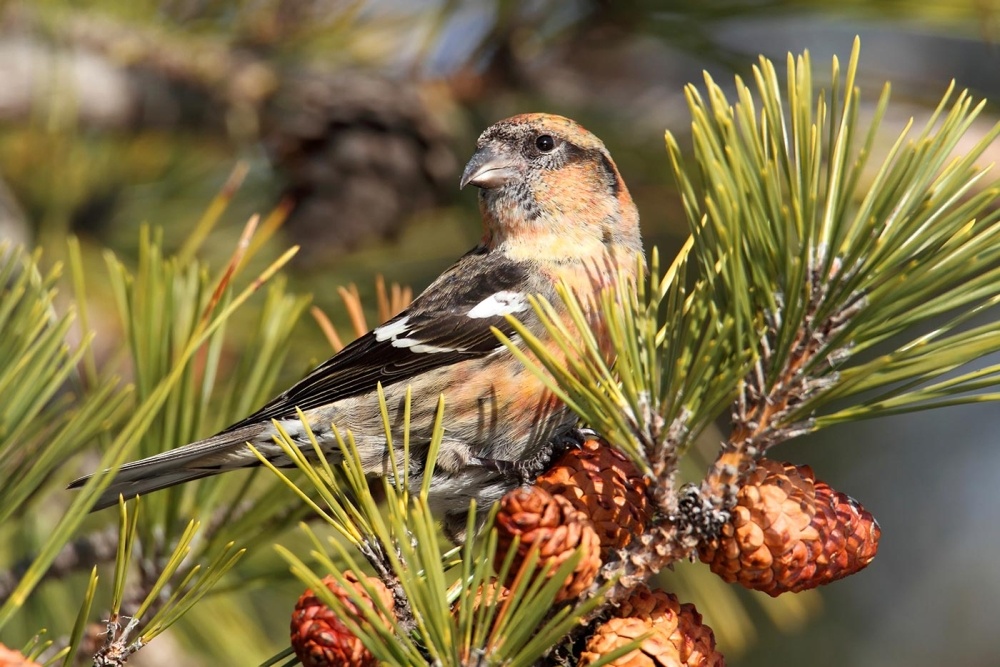
No other North American songbirds exhibit the unique bill structure, highly specialized diet, unpredictable movements, and opportunistic nesting behavior of our two crossbill species. Both the white-winged and red crossbill are finches of northern coniferous forests; the white-winged is mostly a denizen of Canada’s boreal spruce, fir, and tamarack zone, although in some years, it is present year-round in Maine and other parts of northern New England and New York. Red crossbills occupy a more catholic and southerly range that extends as far south as Alabama’s Appalachian Mountains and encompasses pines, hemlocks, spruces, and firs. For crossbills, life is all about cones, and as their name reflects, their bills are ideally adapted for this specific food source.
Crossbills can’t forage as other songbirds do. Their bills cross over at the tip instead of aligning and are therefore poorly suited to snag insects or fruit. They are, however, perfectly suited to pry open cones of spruces and other conifers. As Kenn Kaufman noted in a 2017 profile of white-winged crossbills for Audubon magazine, “A crossbill can pry two scales apart and use its tongue to lift out the seed from between them, over and over, removing all the seeds from a cone with great efficiency.” According to Kaufman, a single white-winged crossbill can extract and consume an estimated 3,000 conifer seeds in a day.
But here’s the rub for crossbills and other conifer seedeaters: their food crops follow classic boom and bust cycles, varying inconsistently and unpredictably across both space and time. Scarcity often follows abundance, so crossbills must be ready to move as cone supplies shift. Their nomadic lifestyle enables them to exploit cone bonanzas, wherever and whenever they occur, but also entails risks inherent to moving in to new and unfamiliar areas, as well as the energetic costs and increased predation exposure that come with extensive traveling. Some crossbills move as many as three times – over a combined distance of 2,000 miles or more – in a given year.
Such a rootless existence even extends to breeding by both crossbill species, which are quintessential opportunists when it comes to reproduction. Because adults feed young by regurgitating digested conifer seeds, crossbills must be ready to put down nests when conditions permit. That may include the depths of winter, as long as sufficient cone crops are available to fuel female egg production and to enable provisioning of young. Both white-winged and red crossbills have been known to nest in every month of the year, including the coldest months of winter, and some birds may move large distances to attempt second nests. Again, it’s all about the cones.
For birders, the emergence of a locally heavy cone crop can be an exciting portent of a crossbill invasion, also called an “irruption.” This past autumn, white pines and spruces through much of the Northeast were festooned with cones, and small numbers of crossbills – mainly reds – had already appeared in New England and New York by midsummer. Their animated chattering in flight and while foraging in the canopy of tall conifers often signals their presence, as does their habit of gathering grit on gravel roads to aid digestion. As cone crops ripen, crossbill numbers are almost certain to build across the region. The winter of 2024 may be one to remember for these uniquely itinerant nomads with their oddly crisscrossed bills.

